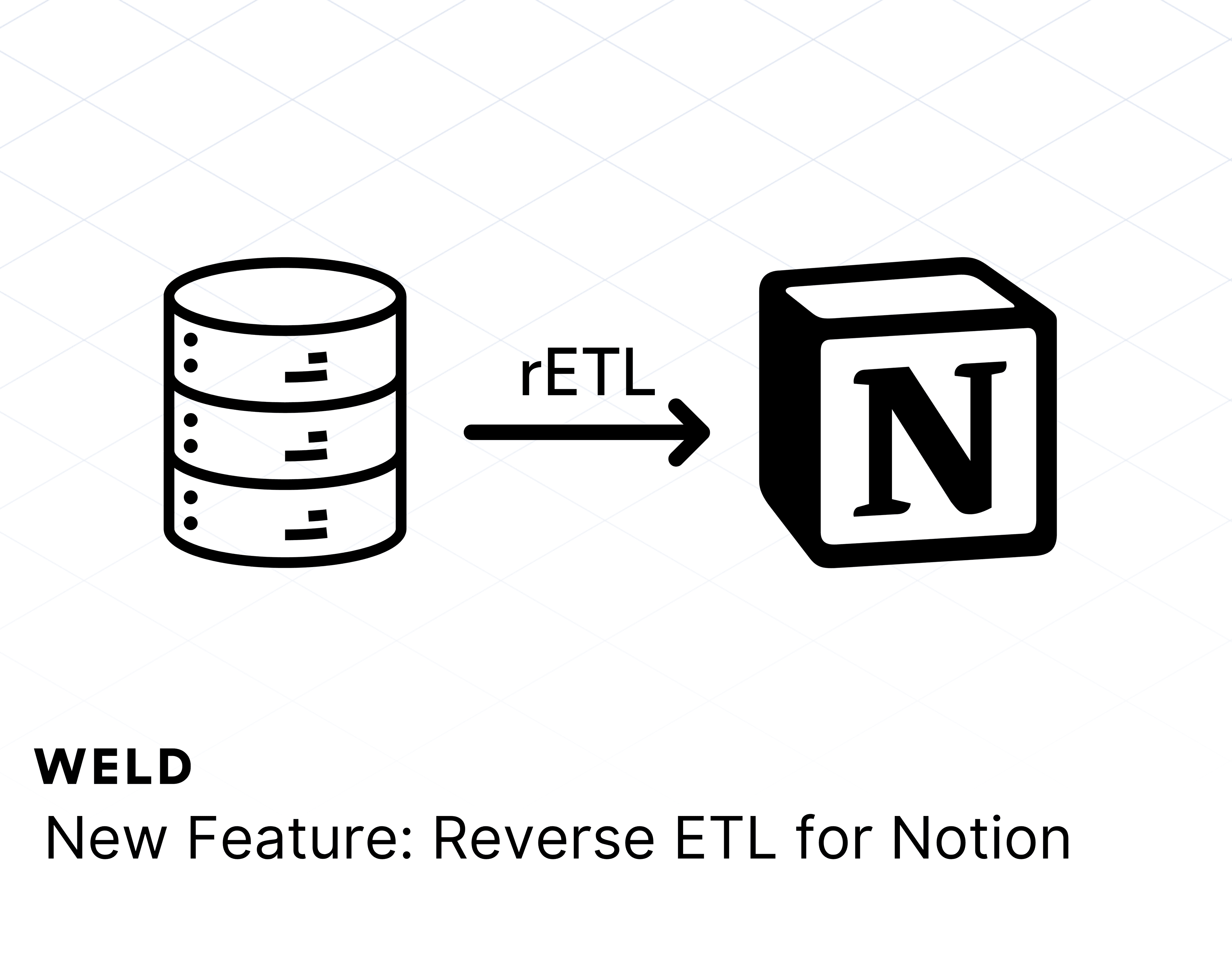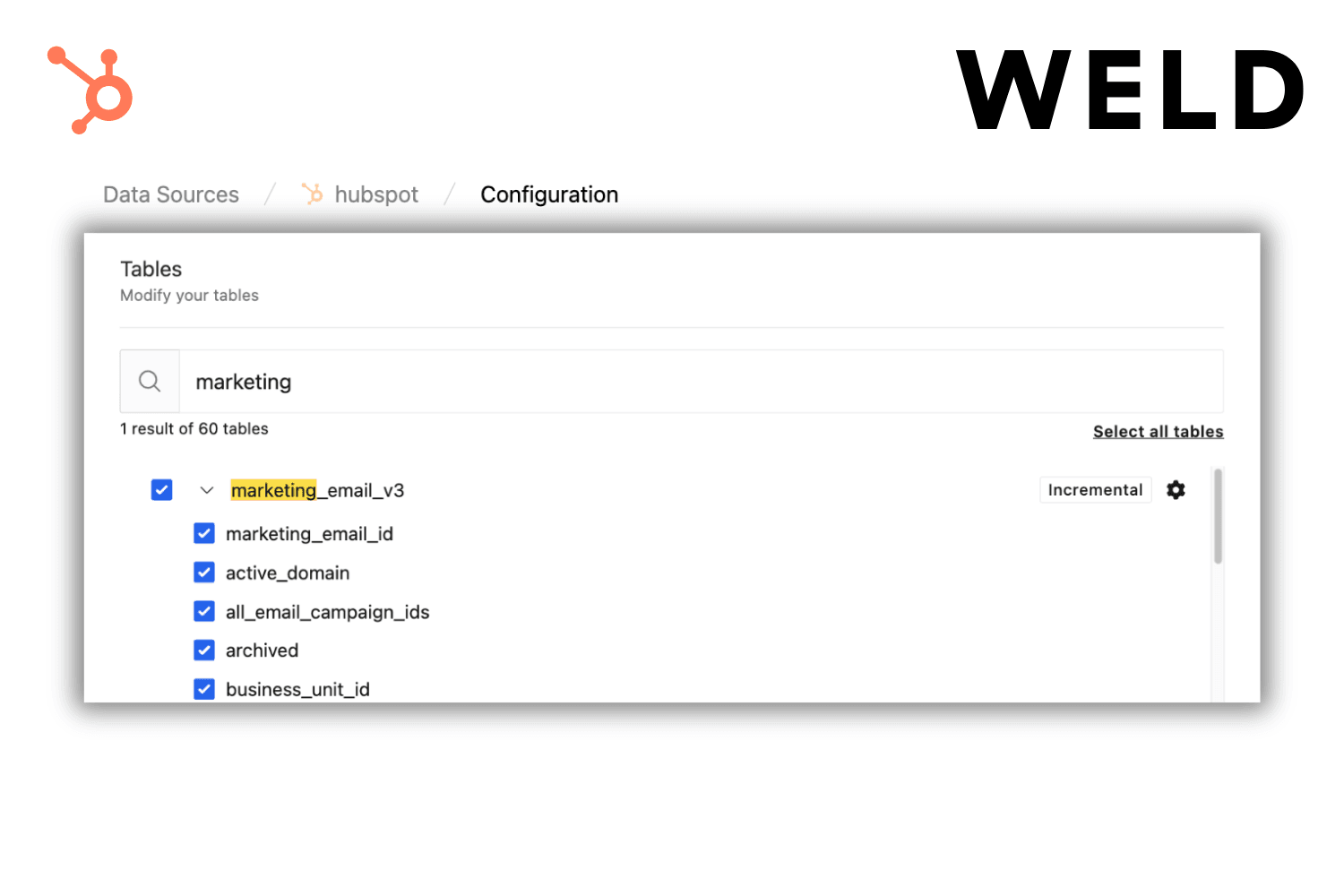In e-commerce, data is more than just numbers - it’s a powerful tool for driving growth, efficiency, and customer satisfaction. However, with so much information coming from multiple platforms, it’s easy to get overwhelmed. To uncover the most impactful ways to use data, we asked Weld’s Shopify users to share their top use cases. Their insights revealed five key areas where data can truly transform operations and help businesses scale.
This blog highlights these five use cases, offering practical strategies to overcome challenges and maximize the potential of your e-commerce data.
1. Centralizing data in a data warehouse
One of the biggest hurdles in e-commerce is managing data from various sources - Shopify, Google Analytics, Facebook Ads, and more. A centralized data warehouse creates a unified view of your operations, eliminating silos and ensuring consistent reporting. Centralizing your data can streamline processes like reporting and analysis, saving time and reducing errors. Whether you’re monitoring sales trends or tracking marketing performance, a single source of truth helps you make faster, more informed decisions.

With Weld, you can connect your data to leading data warehouses like BigQuery, Snowflake, or Redshift, ensuring your data is stored securely and ready for analysis. Explore our data warehouse integrations.
2. Getting a complete overview
Many Shopify stores spend countless hours consolidating data from different stores and countries. A complete view across all stores is essential for tracking key metrics like sales performance, inventory levels, returns, and average order value (AOV).
When your data is scattered across multiple tools or locations, you lose time and risk errors in reporting. Bringing everything together in one place ensures consistency and clarity, enabling better decisions. For example, tracking AOV alongside inventory levels can help you pinpoint opportunities to boost sales and manage stock more effectively.

Weld makes it easy to connect your data to the BI tools you already use, such as Tableau, Looker, or Power BI, enabling you to visualize your metrics and gain deeper insights into your business performance.
3. Profitability insights
E-commerce success isn’t just about sales volume - it’s about understanding your costs and optimizing profitability. Analyzing expenses such as production, marketing, and shipping can reveal opportunities to cut costs and maximize margins.
For instance, comparing shipping rates across regions or analyzing supplier costs might uncover inefficiencies eating into your profits. Knowing where every dollar goes enables smarter pricing, inventory management, and investment decisions.

Danish Endurance boosted their profitability by 77 % from using Weld. Learn how in our latest customer story.
4. Optimizing marketing performance
Effective marketing requires data-driven decisions. Metrics like ROAS (Return on Ad Spend), CPA (Cost per Acquisition), and conversion rates are essential for understanding which campaigns are performing well and which need adjustment.
By leveraging real-time insights, you can make quick adjustments to your campaigns. For example, reallocating budget from underperforming Facebook Ads to a higher-performing Google campaign ensures better returns on your marketing spend. Effective marketing relies on understanding and optimizing your campaigns in real-time.
AI-powered tools simplify this process by automatically organizing and visualizing your marketing data. AI can detect trends, highlight anomalies, and create intuitive dashboards that make it easier to track performance. For instance, rather than sifting through spreadsheets, you can see a clear visualization of your top-performing ad channels and adjust your budget accordingly. Learn how AI can help visualise your marketing data in our ebook.

5. Personalization
Customers today expect a tailored shopping experience. Analyzing data such as purchase history, browsing behavior, and interactions allows you to create personalized marketing campaigns, boosting engagement and conversion rates.
Personalization can take many forms, from recommending products based on past purchases to sending exclusive offers to loyal customers. These strategies not only increase sales but also build stronger customer relationships.
With Weld's Klaviyo connector, you can sync all your data seamlessly - from Shopify to your email marketing platform - allowing you to create hyper-targeted campaigns that drive results.

Conclusion
Unlocking data in these five areas can elevate your e-commerce business to new heights. Whether it’s centralizing your data, tracking key metrics, optimizing marketing performance, or delivering personalized experiences, the insights you gain from data drive smarter, faster decisions.
Starting your data journey doesn’t have to be overwhelming. With Weld’s setup guide, you’ll get step-by-step instructions to sign up, connect your tools and start seeing results quickly. Our Shopify templates are designed to help you organize and analyze your store’s performance metrics effectively, while connectors like Klaviyo, Facebook Ads, Amazon Ads and Google Analytics make syncing your data straightforward and efficient. These resources empower you to streamline operations and focus on growing your business.












